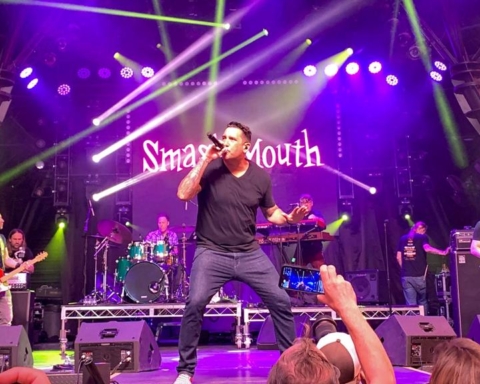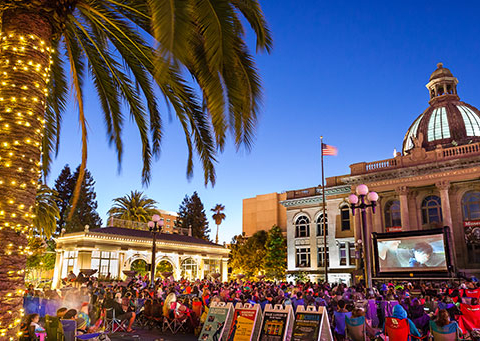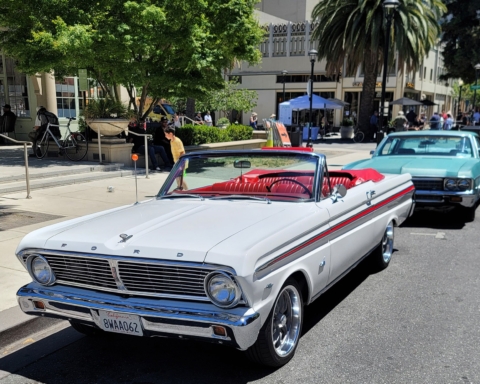By Jim Clifford
There’s a lot more to St. Patrick’s Day than green beer—usually imbibed by people who don’t know County Kerry from Marin. A new state law mandates one semester of ethnic studies for all California high school students who graduate starting in 2030. Such classes often focus on marginalized peoples, and it may help to remind high schoolers that most immigrants were considered “out groups” when they came the U.S.
The Irish were no different when they started arriving around 1820. In New York City, especially, newspapers carried employment ads with the acronym, “NINA”—”No Irish Need Apply.” Irish-American men and boys were routinely stereotyped as hooligans and drunks. As with derogatory images of other ethnic groups, the unflattering portrayal of 19th-century Irish-Americans has persisted, even appearing in a widely used U.S. history textbook first published in 1980.
But if it’s true that everyone is Irish on St. Patrick’s Day, then March 17 is a good place to start finding one’s roots. It may come as a surprise, but there was a time when the Bay Area’s Irish heritage was strong and thousands of immigrants from the Emerald Isle headed every year for celebratory picnics on the Peninsula.
The numbers are difficult to confirm, but various reports say 15,000 people turned out for events in Redwood City and San Mateo, and a picnic in Belmont drew about 10,000. One newspaper story estimated the train carrying passengers to Belmont Park in 1868 was a half-mile long. Its account promoted the popular view of the Irish as brawlers, saying the train was “headed by three or four engines, puffing and blowing like so many thousand savage Fenians eager for the fray.” (The Fenian Brotherhood was an Irish-American group that agitated for Ireland’s independence from Britain.)
The Redwood City picnic of 1870 was front-page news in the San Mateo County Gazette. The paper was a veteran in reporting on Irish-American gatherings, having covered the San Mateo event in 1866, the year the Fenians invaded Canada, which achieved its own independence from Great Britain 13 months later. In their quest for Irish freedom, the Fenians in 1881 also produced the first practical submarine in an attempt to end Britannia’s rule of the waves. The vessel, called the Fenian Ram, was tested but never used in battle.
Contemporary accounts of the Peninsula gatherings were a bit condescending, coming at a time when nativists warned of the presumed Irish three Rs of “Rum, Romanism and Rebellion.”
“To the credit of the Irish, they disappointed many who anticipated a disorderly riotous rabble,” the Gazette said of the San Mateo picnic. The paper noted there were only a few drunks, “considering the amount of liquor” involved. Just a handful of arrests and fistfights were reported at the event in Redwood City, which had a population of only 1,000 at the time.
A Neglected Revolutionary Organization
The Fenians, the American branch of the Irish Republican Brotherhood, which operated from 1858 to 1924, are among those militant groups largely overlooked in American history. They certainly weren’t ignored in Canada, however; certain historians say the attack by Fenian soldiers, mainly Irish-American veterans of the U.S. Civil War, contributed to the drive for Canadian independence.
The San Mateo picnic in 1866 came a month after Fenians crossed into Canada at Niagara Falls on June 2 and met opposing forces at Ridgeway, today part of the town of Fort Erie, Ontario. The disciplined fire of the 1,500 or so Irish-Americans was too much for the raw Canadian militia, which retreated from the battlefield upon which nine troops were killed. The Irish-American fighters then went to Fort Erie and captured a small garrison whose officer in charge cut off his whiskers and fled in disguise, according to Canadian poet and historian Edgar McInnis.
McInnis wrote in his book, “The Unguarded Frontier,” that the invaders became cut off when the United States sent a gunboat to prevent reinforcements. Most of the Fenians were arrested and released. The revolutionaries continued minor raids in Canada, the last in 1871. Why Canada? According to McInnis, the plan was to draw English troops out of Ireland and over to North America.
The Fenians also had a navy, or at least hoped to have one. They raised enough money to back Irish-born naval architect John Holland in his quest to build a submarine, which he accomplished in 1881 with the Fenian Ram. Even though the craft never saw action, Holland kept building submarines. His final design was sold to the United States and commissioned in 1900 as the USS Holland. The Fenian Ram still exists and can be viewed at the Paterson Museum in Paterson, New Jersey.
No Irish, No San Mateo County?
Some say San Mateo County owes its birth to the Irish. A stretch? Maybe not. Consider when the county was founded—1856, a year displayed prominently on the county seal. In San Francisco, 1856 is known for something else: It was the year of the Committee of Vigilance. Vigilantes, for short. It was a time when angry San Franciscans took the law into their own hands, hands that held guns and ropes—as in hanging.
To this day, historians debate if the main aim of the vigilantes was to crush crime or to rid San Francisco of a growing Democratic political machine run by Irish Catholics that was threatening the established power structure. “Anti-Catholic and anti-Irish feeling seethed through the Vigilantes,” wrote esteemed California historian Kevin Starr in his series, “Americans and the California Dream.” According to Starr, the Vigilante movements of both 1851 and 1856 were fueled by “anti-foreign reformism on the part of outraged businessmen.”
In 1856, the thinly settled Peninsula was part of San Francisco, whose population was approaching 60,000. Certain lawmakers thought making San Francisco both a city and a county would end jurisdictional disputes in the prosecution of so-called “toughs,” who were mostly Irish. For their own part, the “toughs,” a term used in histories written during the era, viewed the Peninsula as a promising place to enjoy pastimes that included prize fighting, gambling and drinking in saloons. State politicians in Sacramento agreed to San Francisco’s request, with the understanding that the new San Mateo County would be established.
It came to be in 1856, in an arrangement made to order for San Francisco’s criminal elements. The initial San Mateo County election to pick officials as well as the county seat was replete with stuffed ballot boxes and physical intimidation at the polls by thugs known in the day as “shoulder-strikers.” The California Supreme Court invalidated the results of the first election, in which Belmont was picked as the county seat. In the second election, the voters chose Redwood City.
The county emerged at a time when Peninsula residents, including many Irish-Americans, were trying to live off the land, mainly through farming, dairy production and logging, all ventures needed to feed and house the giant city to the north. Eventually, both Redwood City’s police chief and fire chief would have Irish names, but it was ordinary men and women who formed families that were often founded on strong religious beliefs and that helped write the area’s growing success story.
Their faith was so enduring that what they started more than a century ago is still a household name in Redwood City. The community’s Irish-Americans settled mainly east of El Camino Real, on the historically poorer side of town. Virtually all the pastors of their Catholic church, St. Mary’s, were also Irish.
Today, the church and school, now called Mount Carmel, are literally located—as the old saying goes about upward mobility—on the other side of the tracks. The desirable Mount Carmel neighborhood on Redwood City’s west side is beloved by real-estate agents and offers strong evidence of Irish-Americans’ ascent in the 20th and 21st centuries.
What’s in a Name?
Throughout much of the 1900s, sociologists referred to the mingling of various ethnic groups in America as the “melting pot.” Later, emphasizing the identities of separate peoples, others started calling it the “mosaic.” However it’s viewed, it’s on display every St. Patrick’s Day at St. Francis of Assisi Church in East Palo Alto, which hosts a dinner that recalls the area’s Irish heritage.
Father Larry Goode says the parish today contains a mix of cultures, including African-American, European-American, Hispanic and Tongan. Near the church, it’s impossible to miss the area’s Irish roots, especially in the street names. One of them is Kavanaugh Drive, which commemorates the family that donated the land for the church.
Menlo Park has several streets named for Irish people, according to local historian Bo Crane. Crane says the city was founded in the 1850s by Irish pioneers Denis Oliver (whose first name is also recorded as “Dennis”) and Daniel McGlynn, who both hailed from Menlough, an Irish village in County Galway. How did Menlough get shortened to Menlo? The best guess is that something got lost in translation.
There is also the matter of that other Menlo Park, the one in New Jersey that was the home of inventor Thomas Edison. According to a 1941 program marking the dedication of a fire station in the New Jersey town, that Menlo Park was named “for a village in the County of San Mateo” in California. A welcoming gate with ”Menlo Park” arched over the top was dedicated in the California “village” in 2019 on the library corner of Ravenswood Avenue and Alma Street. The ceremony, of course, was held on St. Patrick’s Day.
A few Menlo Park citizens have visited Galway, Menlo Park’s sister city, returning with stories about the ties between the two towns. Galway even boasts a Menlo Park Hotel, which features a restaurant named “Oliver and McGlynn.” It’s a good bet that a resident of Menlo Park—or anywhere else—can enjoy an invigorating pint there, and not only on March 17.






